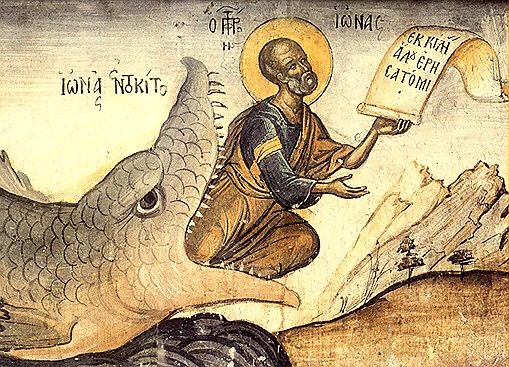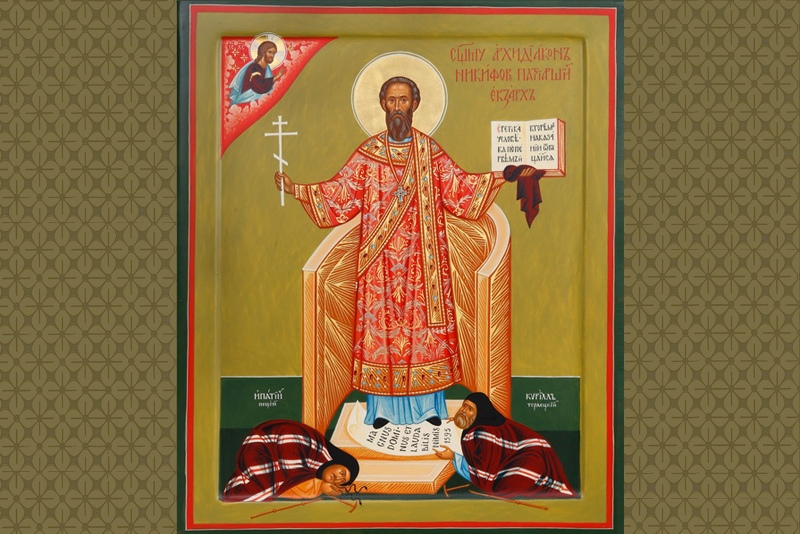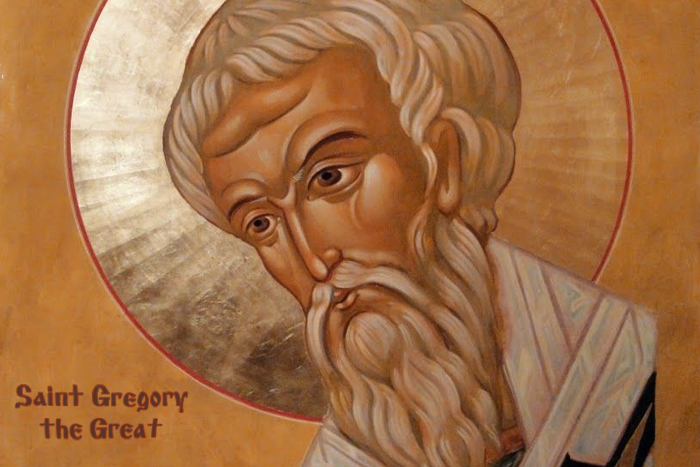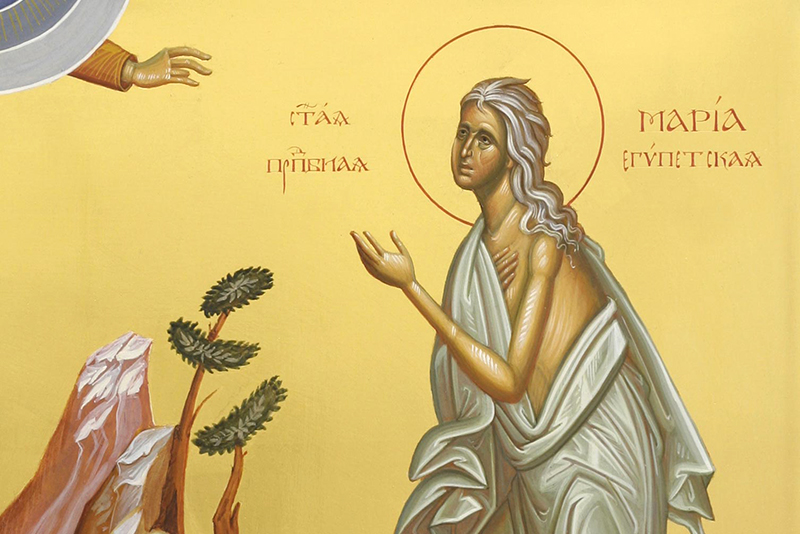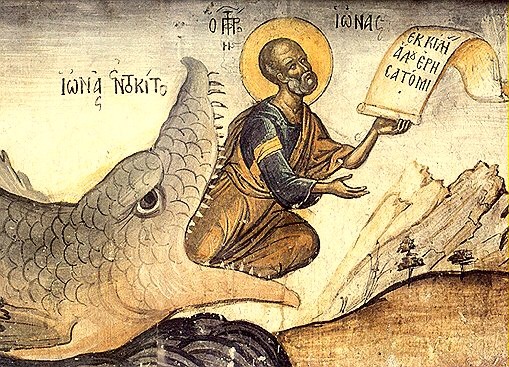
“Pacify yourself and heaven and earth will be pacified for you”. Abba Isaac
The relationship of men towards animals perhaps should be presented under the prism of the creation of the world. We specifically read in Genesis, “and God created the beasts of the earth after their kind, and the animals after their kind and all that creep on the earth after their kind and God saw that it was good (Gen, 1:25).
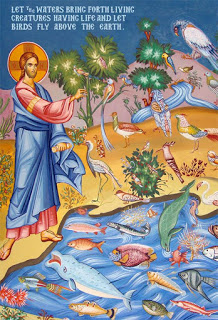
After his creation man is given dominion over all the animals “over the fish of the sea and over the foul of the air and over every living thing that moves upon the earth (Gen, 1:28).The dominion over the animals extends in their naming when God brought all the animals in front of him to give them their name: “…and brought them unto Adam to call them and whatever Adam called every living thing, that was its name” (Gen, 2:19).Thus man has authority over the animals as on all creation, being a creation “in the image of God”. The animals looked on man as a crown of the complete creation, for this they not only submitted to him but lived in harmony between themselves.
The fall of the first created did not only have a radical change in the relationship with God but also between man and creation. Having darkened the “image” and lacking the divine grace, man now is confronted with hostility by the dumb animals “the beasts and all the animals of the earth seeing him denuded of the former divine glory, ignore him and immediately became harsh towards him”. The result being that some animals he feared and other animals feared him.
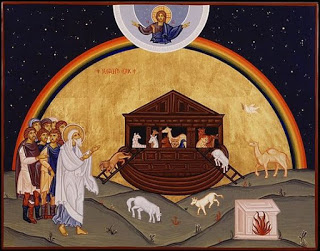
After the fall the whole creation waits, like man, for its liberation from the fetters of sin, “for we know that the whole creation groans and suffers in pain until now” (Rom, 8:22), the whole creation suffers- thus the animals as well- together with the suffering man.
In Genesis we also see the decision of God to destroy man “for them being of the flesh” but as He spares the just Noah and his family so also He takes care of the animals “for You took care of the animals in the Ark”
In the Deuteronomy it is noted that one of the main reasons for observing the Sabbath is due to the need for the animals to rest. In the preamble psalm (103) the caring of animals is mentioned, “they give drink to every beast of the field; the wild donkeys quench their thirst” (Ps, 103:11). For the thirst” as to Joel “and the animals of the valley he cared when the water discharges dried up”. Where as at the second coming of Christ, “I will make a covenant for them with the beasts of the field and the fowls of heaven and with the creeping things of the ground” (Hosea, 2:18)
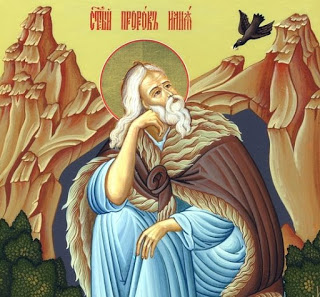
In many instances in the Old Testament we see the pre-fall relationship of man with the animals, where an explicit promise is given to the Prophet Elijah, that he will be provided care for his feeding, “and I have commanded the ravens to feed you there” (1 Kings, 17:4). We see the raven is a bird by nature despised bird – that does not even care for its young – carrying meat and bread to the prophet. Jonah remains three days in the belly of the whale (“mark of Jonah”) symbolizing the three day burial and resurrection of the Lord. Later, in Babylonian detention of Daniel, he remained unhurt in the den of the lions: “They placed him in the lions pit and he remained there for six days”, on which the Apostle Paul later said, “the mouths of the lions were sealed”.
The time of Christ
Our Lord coming to this world receives the affection of the dumb animals: “and wrapped him in swaddling clothes and laid Him in a manger” (Luke, 2:7).
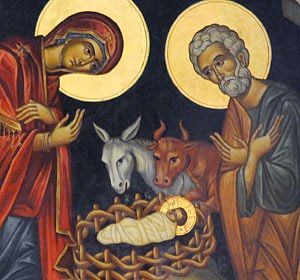
Later when Christ was getting ready to preach the world, after the 40 day fast, we see Him living in the midst the beasts of the desert: “And He was there in the wilderness for forty days tempted of Satan and was with the wild beasts and the angels ministered unto Him” (Mark, 1:13). In the miracle of the healing of the demonic, Christ orders the demons and they enter the swine, in impure animals, which then fell into the lake. This is proof that animals can be infested with demons.
The promise of Jesus to His disciples is that He will protect them from dangers, and He will give them authority “to tread on serpents and scorpions […] and nothing shall by any means hurt you” (Luke, 10:19).
Early Christian Times
After Apostle Paul was shipwrecked at Meliti, when the barbarians saw that he was bit by a viper, they shouted “no doubt this man is a murderer […] yet justice has not allowed him to live”(Acts, 28:4).
When however they saw him remain unaffected, “they changed by saying that it is his God” Here we see the fulfillment of the promise “and snakes they will take up” and secondly the miracle results in the changing of the minds of the Melitians.
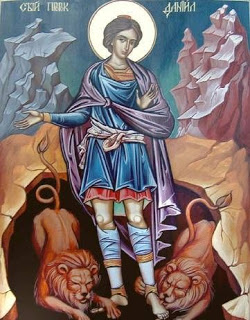
The cases are limitless of martyrs that are thrown as feed to the wild beasts and not only they are not hurt by them, but with their attitude they show (licking the head or wounds) they submit to the martyrs demonstrating through this that God “turns the beasts to submission, preserving them according to the image and likeness spotless”. From these miracles it is worth describing briefly some indicative cases from the collection of the saints.
The saints Trophimos and Dorymedon are given as feed to a wild bear and because they remain unhurt, they are thrown to a leopard and then to a lion. Because even the lion did not bother them, the beast tamer started prodding it to attack them, the lion lunged at him and torn him apart.
In the case of saint Golindouch not only the martyr remained unhurt by the dragon inside the pit, but the beast became tame and was resting on her. Similarly Saint John in a shaft of a dry well, was protected from scorpions and serpents.
Saint Alexander, bishop of Jerusalem was condemned to be torn apart by the beasts, however after his prayer, some of them worshipped him by bowing their heads and others were licking his wounds.
Impressive is the case of Saint Hypatius who killed in a spectacular way a huge snake that had entered in the castle of the emperor Constans. He placed his rod in the mouth of the beast and it followed him to the marketplace where he burnt it in a huge pyre.
The animals serve the Saints

Further to the cases of protection of the martyrs from being hurt by the wild animals -which were described above- our collections describe many cases where the animals served the Saints in different ways.
Saint Koprios as a baby was fed by a goat which “grazed with the other goats and when it was time to ‘breastfeed’ the baby, it descended from the mountain and having ‘breastfed’ the child it returned to her usual grazing. The same Saint was ascending the mountain with a laden donkey which was then wounded by a bear, he then got hold of the bear, loaded it with the wood and told it “you’ll perform the service of the donkey until it recovers”.
In the case of Saint Makarios the Roman, the lions became the cause to feel his sinfulness: every day two lions would come to his cell and keep him company. One night he was tempted by a thought of the flesh and considered it a great sin, because the lions would not come close to him for ten days.
Well known is also the case of the lion and Saint Gerasimus the Jordanite, where the beast “was forced to carry water, while in many depictions it drags the donkey from the bridle (reins) and brings it to the Saint as a hunt quarry only to be falsely accused that it had killed it.
The care of the beasts however does not stop in serving a Saint, but continues to the taking care of the relics, as shown in the case of Saints Philomonas and Apollonius: Their relics were placed in bags and were cast into the sea where a large dolphin “took” the bags on its back and brought them to the coast of Alexandria.

In the life of Saint Martinus, bishop of Lougdoynoy, there is this happy story that shows the love of the animals towards the Saints: in the area of Nitria, an ascetic lived on wild herbs but did not know how to select the good from the poisonous, with the result that he would suffer with convulsions. This way he stopped eating for seven days and was on the verge of dying. Then an ibex (type of deer). Approached him and dropped him a bag of vegetables. The beast with its mouth selected the good from the poisonous herbs. This way the ascetic taking this as an example of what to eat, he was saved from death.
The Saints heal or send away the animals
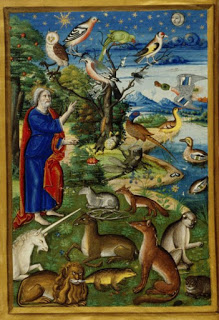
As Isaac the Syrian said: “a merciful heart is the fuel of all the creation […] and of the fowl and of the animals […] for this to the benefit of the dumb animals […] blesses tearfully every hour.
For this reason, flooded by the love for God and man, the saints have great reserves of love, that they pray also for the animals and in fact heal them, either because they suffer and feel compassion for them, or because they are useful to people while getting rid of the risks that hurt people.
In Saint Mark the ascetic a hyena visited him and brought her blind cub and acted as if she begged the Saint to cure it. The Saint having prayed spat in the eyes of the cub which was then healed. Few days later the hyena brought him a pelt of a large ram. The ascetic took it after making sure that the hyena understood she should not harm the sheep of the poor.
Many times the healing of the suffering animal was nothing more than from a pathological organic disease, but an animal could also be tormented by demons as we see in the Synarxis of Saint Martin of Tourins: “he met a cow that was tormented by a demon and was goring people with her horns. When the Saint approached, he lifted his hand and ordered the animal to stop. He sees the demon sitting on the back of the animal. “Go unclean from the animal and cease tormenting the innocent animal. When it was freed, the cow fell at the feet of the saint. He then ordered it to rejoin the herd, stronger than the sheep.
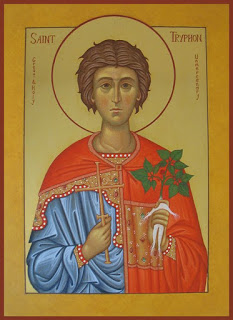
One of the common scourge of the plants and trees are the locust. Our Church then reads prayers of Saint Tryphon that has done a specific miracle with the locust. Similar case with harmful animals is also the following: Monk Joannikios once went to the island of Thasos. The island was infested with poisonous snakes that caused death. The people of Thasos, begged the ascetic to save them from the scourge. He prayed and immediately the snakes started coming out of their nests and head for the sea where they drowned.
The animals show gratitude and contrition to the Saints
The animals which received benefits from the saint – within the framework of communication that develops – express their gratitude with different ways to their benefactor, such that the biographer of Saint Martinus wrote: “for this we sigh that the beasts feel the kindness and the people do not revere it”.
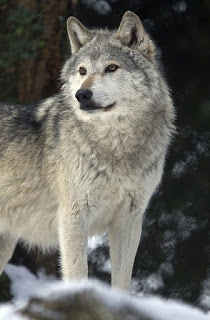
The lion that benefitted from Saint Gerasimus volunteered to serve him by “hauling water”. From the life of Saint Martinus, again, we have the following: “an ascetic accepted a visit from a female wolf which he treated with whatever he had. Once while absent the wolf entered his cell and ate a piece of bread. The following days the animal did not come. This saddened the ascetic who then made it the object of his prayers. The seventh day the wolf came and sat at a distance ‘in a way that one could detect displeasure,’ with eyes looking down from deep shame, obviously asking to be forgiven. The ascetic caressed her giving her joy.Thus, as the biographer notes, the wolf renders service (companionship), feeling the wrongfulness of stealing, recalling and having a sense of forgiveness that was granted her”.
Something similar is also the previous example of the ascetic Mark with the hyena that gave him the sheepskin as a gift for the care she received and the healing of her cub.
The mourning of the animal for the death of a saint
The lion that served Saint Gerasimus the Jordanian in its customary visit to worship the elder, was informed by the attending monk of his demise and when it was led there (to the grave) “it roared greatly and then expired”.
Another lion helped the elder Zosimus to bury the relics of holy Mary of Egypt: “Immediately when the lion was told the required size of trench, it did so (dug it) and then buried the body”.
The animals talk about God
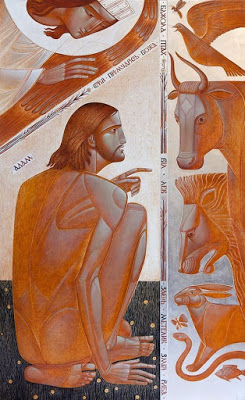
Between the other wonderful signs that we find in the collections, noteworthy are those where the animals appear to be talking with God or the Saint.
Holy Artemon of Laodecia was followed by two deer and six donkeys. When he was captured, he told the animals to report it to bishop Sisinius – who was surprised when a female deer told him of the arrest of Artemon. While the Saint was being tortured by being skewered over a fire, the deer would lick his burns and then said to the torturer: “know impious one that two big birds will grab you and will drop you in the boiler” as it happened. Also at the martyrdom of Saint Eutyhius the animals would speak.
Similar is the case of the wild mules which dragged the corpse of Saint martyr Zoticus, the orphan feeder, to the emperor Constantius. “Even when they were flogged violently by the torturers, the human voice invokes everybody to their triumph over the king’s atrocities and lack of reason, calling him blind and insensitive”.
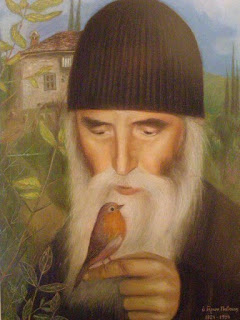
This amazing phenomenon of talking animals is not foreign in the Old Testament where we have the conversation of Eve with the snake and the donkey of Valaam. Even as these two cases in the Old Testament, subsequently those in the New Testament are given different explanations. Through all these cases, the explanations given confirm the Jewish teaching that all the animals had the grace of speech in paradise until the expulsion of the first created there from.
Others, denying the historical validity of the Bible, consider such narrations as myths. More powerful is the explanation of Holy Chrysostom in his 16th speech on Genesis where he explains the conversation between Eve and the snake, through which it is apparently applicable to all the other similar stories in both the Old and New Testaments. “But perhaps someone may wonder and wish to know if the beast took part in the conversation. May this not be so, for always following the scripture it is necessary to consider that while the saying were of the devil… the beast was used as a specific tool”. According to this explanation by Saint Chrysostom it is not this animal but God Himself who gives us the message or
the devil, as was with Eve and the snake.
the devil, as was with Eve and the snake.
Contemporary Saints and Elders
Because the lives of the earlier saints may seem somehow distant from the contemporary world, it would have been an oversight not to mention more recent saints and elders of our days:
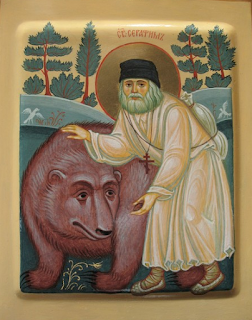
a) Saint Seraphim of Sarov: in the life of the saint it is said that he was served by a bear which had as a “Deaconate” to “serve” the saint’s visitors: sometimes he would send the bear for some “need”. “Instead of scaring people, Misa, it is better you go and bring me something good…”. The bear would return holding in her front paws a cob of honey”.
b) In the collections of elder Hadzigeorgis, it is said that the elder made the sign of the cross on the wild boar that was destroying his garden and it remained motionless. He then took it by the ear and closed it in the stable under a “rule”. Three hours later he freed it telling it that if it stepped back he would receive a double “rule”. So it happened.
c) Saint Arsenius the Cappadocian never mounted animals because he did not wish to burden them.
d) From the life of elder Paisius we see that wild birds would approach him and feed from him. When some enlightened one told him that he believed in some power but not in Christ the Saint replied, “you are more stupid than the lizard”. To the great surprise of the man, the elder asked the lizard if Christ existed and the lizard replied by moving its head affirmatively.
Another characteristic with the elder Paisius that reminds us of the prophet Elijah, is the following: “On the Sunday of the blind, being sick, exhausted and hungry he went out to the garden somewhat unhappy because he had nothing to eat. He looked at the sea and saw a large bird rising to the sky, such as a hawk or an eagle that held in its talons a large fish. As it arrived over his cell, it let go of the fish which then dropped in front of his feet. The elder prayed, cooked it and then ate it”.
A pre-fall picture
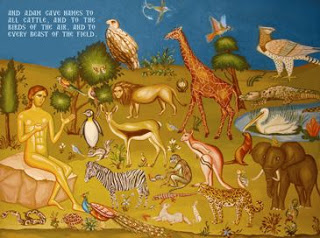
As a crowning over all the wonderful cases in the relations of the Saints with animals, it is perhaps worth mentioning the description from the “Thebaid of the North”. Someone visited Saint Paul of Obnaras who lived in a remote area of the Russian forests. When he saw him he became witness to the following: “A great number of birds surrounded the Saint. The smaller ones even climbed in his shoulders and head and he would feed them with his hands. Close to him was a bear that waited to be fed. Foxes, hares and other animals would mingle without any aggression between them. It was a wonderful picture of the first created innocent Adam in the garden of Eden.
The protectors of the animals: Modesto and Mamas
Our Church expressing her love for the dumb animals made – in view of their specific miracles- the Saints Modesto and Mama their protectors. “Miracles brighten all the earth, from disease and danger you save every soul and your visit soon stops the pernicious infections of the nurslings (=animals).
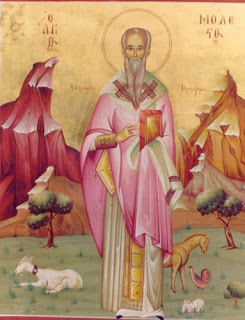
In the martyrdom of Saint Mamanta it is mentioned that they threw him to the wild beasts, which however stood beside him, joyfully wagging their tails. In agiography, the saint is depicted sometimes riding a lion and other times holding defensively a little doe.
Apparently, from other cases, as well as from Saint Tryphon – protector of gardens- we see that some distinction is made between the wild animals: The saints, even though they generally love the animals, they send away or kill the damaging ones (birds, snakes, locusts) when they become the cause of hardship and suffering of man. The centre of love is God, then man and then the animals, in a relationship based on whether they benefit or harm man, who when benefiting glorifies God.
Church’s blessings on the animals
The Church with her blessings on all the creation – it is not possible not to pray for the animals as well – as for all the creation. This is concluded by the different blessings in the Book of Blessings (Efgologion): blessing against the transmission of animal diseases and of drought.
In particular we see some characteristic excerpts from the blessing of Saint Modesto: “hearken to this supplication and remove all deadly disease and hurt from the animals (horses, donkeys, mules, sheep, goats, bees and the rest of the animals) that are useful in the lives of your servants, pity all the suffering animals […] their suffering and their grief miserably they announce […] that your servants abundantly enjoy […] being fully self sufficient and having left over in every good work and glorify You, the provider of every thing good”.

Also, in the similar blessing of Saint Mananta we read, “the envy of the devil has befallen the flocks and cattle […] and results in evil […] that they may be cured from all evil and in remembrance after this period for the glory of God”. Accordingly, in the prayer of silk that You may oversee on the worm […] protect from all poisons and entrapment. Grant the working one that it may not be burdened vainly but enable it to richly fulfill this blessing”. In the prayer for the animals, the Church implores the blessing of the animals as were the flocks of Abraham and ends by saying: “Keep them healthy and brawny […] and guard them oh Lord with Your holy angels”. Finally in a corresponding blessing on drought, “look after the stricture of the birds, the boom of the beasts […] the seeds of the earth scatter for the sustenance of people and animals”.
Concerning the above prayers we can make the following observations: Firstly, the Church prays -through the saints who composed the prayers- for the good health of the animals and the increase of the fruit of the earth, so that man be self sufficient in necessary goods, but this should not be self serving but “so that there should be left over in all goods” and “glorify” “in remembrance of this time, for the glory of God”. Three are therefore the reasons for the well being of the animals a) so that man may be adequately supplied and not suffer, b) to do good works and c) to glorify the name of God.
Secondly the reason that animals suffer – as was already said- it could be due to some demonic activity: “the devil’s envy”, “protect against all poison and entrapment” and thirdly what is truly impressive and is the punch line of the prayer is on the diseases of the cattle: “guard them oh Lord with the holy angels”.
The animals and the people today
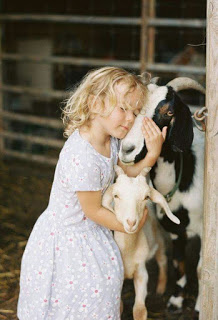
Until the recent traditional society of our country, as life was based on small agricultural communities, the relationships between animals and people were very close as the animals were an integral part of agricultural life, either as domestic animals that were the basic derivative of agricultural pursuits, or as wild animals which sometimes by necessity, they had to be culled because of the damage caused by their overpopulating. There was a certain equilibrium and its basis was by how much was an animal beneficial to man.
In our contemporary, western style urban society, man has drifted away from his natural environment, thus the relationship between man and animal has been disturbed. Phenomena, such as excessive animal loving – such as adoption, hospitalization, inheritance and officially burying dead animals- consist in outrageous transformation of the normal relationship between humans and animals. All this is evidently the result of loneliness of contemporary man. However, is it possible that an ethical problem has been created by this precedence of affection? Towards whom should this love be manifested? Towards man or animals? Is it possible some extreme forms of animal love (“the animal has soul”) take us way back to animal worship? Dog, bird, crocodile worship etc of ancient Egypt?

When the Elder Paisius was asked on the relationship of man with the animals, his reply, despite his known love for the animals, was that the love of man must first be exhausted for man and if there is left over to be directed at the animals. However, while there is this sickly form of zoophilia (excessive love of animals) introduced from the West, we see in parallel another one, also of western origin manifestation towards the environment and the animals. In our days the continuing clashes in Serbia, despite the hypocritical disregard by the Westerners for human life, we become observers of their cynical disregard for the environment with the destruction of flora and fauna of the bombed out areas. It was ascertained that the deer and wild birds migrated en masse from the bombed out areas, why, perhaps because they felt that the intervention occurred for peaceful purposes!
Conclusions
From all that were briefly presented on the relationship of the saints with the animals, we see that before the fall of the first created period, the holiness and grace that covered man flowed from his relationship with the Creator, made the animals feel this grace and live peacefully with man.
After the fall, when the “according to the image” had darkened and the grace was removed, the relationship of man with all the creation became disturbed and the relationship between man and animal became hostile. Despite everything the care of the Father Creator did not stop, since He cared for them in the Ark (For You also cared for the animals in the Ark). In the Old Testament we have seen the saints and the just were protected unharmed by the wild animals (Daniel in the lion pit, Jonah in the belly of the whale, Prophet Elijah and the crow). In the New Testament we have cases of martyrs who were protected from ‘wild beasts, saints healing wild animals, which not only served them but mourned for the death of saints. In parallel our Church prays for the animals – not however independently- but for the welfare of animals for the benefit of man but also for the glory of God (‘so that You be glorified”).
Besides it was ascertained that the relationship of saints with the animals is not far fetched and fairy tales, as many believe in our time but a tangible reality that continues to our days, as is apparent from the lives of contemporary saints and elders. Even though the answer for the happy relationship, that mostly could sound strange and unreal in our ears, has been exposed in many ways within this small reality and judged expedient – as punch line – to repeat the answer of Abba Paul to the specific question: ” They asked Abba Paul who as catching with his hand horned serpents, scorpions and snakes. Tell us what did you do to receive this gift? Forgive me fathers. If someone attains purity, everything submit to him, as for Adam when he was in Paradise, before he disobeyed the commandment of God”.

